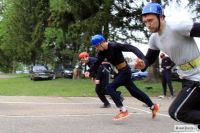News – Desnogoretsev -Bravo!
News
Fire-applied sport or fire-rescue sports-a service and applied sport, consisting in the implementation of complexes of various techniques used in the practice of extinguishing firesIn both individual and group standings.
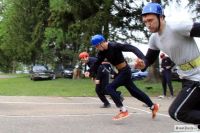
In the fire department, physical education and sports are inseparable from combat training and are its component. In the training program, the physical training of personnel should occupy a large place, since the work related to the extinguishing of the fire requires firefighters of great strength and endurance. The unauthorized fireman will not be able to withstand a huge physical stress when working in a fire, when he will have to lay the sleeve line over a long distance, overcome obstacles, open building structures or disassemble them, act in conditions of smoke, as well as at high temperature.
In parts of the fire department, skiing, athletics, gymnastics, swimming, as well as fire and applied sport are widely developed. For this sport, competitions are regularly held in units,

detachments, cities, regions and republics. Competitions in the fire department for fire and applied sports became traditional. Recently, both professionals and voluntary fire brigades, including youth, have been engaged in these sports.
Such exercises of applied sports as a fire relay race are included in the show show at sports holidays and at other mass events held in areas and cities.
If you look into the history of this sport, we will see that he is soon 80 years old.
In 1937 – the first in history took place among the fire department of the NKVD of the USSR
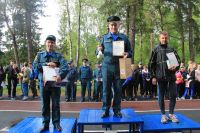
Fire and applied sports competitions. The following types were included in the competition program: climbing the assault staircase to the 4th floor of the training tower; installation of a retractable three -leaf staircase and climbing it on the third floor of the training tower; overcoming a 100-meter strip of obstacles; Fire relay race six, 100 meters with burning light liquid, as well as combat deployment. In addition, the program originally had gymnastics, athletics and shooting.
In 1964, the Fire and Applied Sports of the USSR was formed.
In 1965, the first championship of the USSR in fire and applied sports in Leningrad was held.
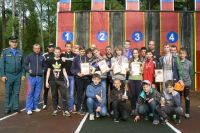
Since 1966, regular annual fire and applied sports competitions have been held among various sports societies and departments.
In 1970, changes were made to the rules of the competition. Until 1970, athletes, when performing exercises, had to put on firewear and equipment, which included: a military -model metal helmet, firefighter’s combat clothes – a jacket and trousers made of rude logging material, a wide leather belt with a metal carabin. .With the adoption of amendments to the rules, athletes were allowed to use lightweight sports equipment and clothing: plastic helmets, light comfortable overalls, a lightweight belt without a carbine, and athletic spikes.
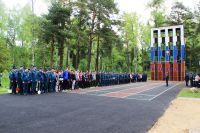
In 1971, regulatory requirements for athletes claiming the title of “Master of Sports of International Class Sports” for Fire and Applied Sports appeared in a single all-Union sports classification.
Since 1973, the International Technical Committee for the Prevention and Extinguishing of Fires (CTIF) decided on regular (once every four years), conducting international competitions for the KTIF Cup (CTIF), which were essentially unofficial European and Fire and Applied Sports Championship.
In 2001, at the initiative of Russia, the International Sports Federation of Firefighters was created and
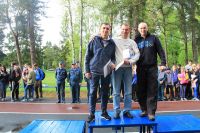
Rescuers with headquarters in Moscow.
On April 12-14, 2002, the first international fire and applied sports tournament was held in Zelenogorsk-Asian Cup.
On September 13-16, 2002, the first world of fire and rescuers in fire and applied sports was held in Moscow. In 2010, I held the first world championship among young men in fire and rescue sports in Kazan.
Competition program Fire and applied sports consists of the following sports disciplines:
Rise along the assault staircase in the window of the fourth floor of the training tower
Participants in the final race of the World Fire and Applied Sports Championship finish in the 4th floor of the training tower
Competitions in the rise on the assault staircase on the floors of the training tower are held in the sequence:
The athlete faces the line of 32 m. 25 cm in front of the start line from the base of the training tower, without stepping on it. It is allowed to take a hand (hands) in a convenient position for the staircase of the assault. At the signal of the starter, the athlete starts and rises to the floors of the training tower in any way, without interfering with athletes on other paths.
It is forbidden to eject the stairs of the assault from the standing position on the windowsill. The finish of the athlete is fixed at the moment when the athlete stepped on the finish sites with two legs (on the floor of the floor) and closed the contact device (with an electronic timing);
Overcoming a 100-meter strip with obstacles
Participants of the VII World Fire and Rescue Championship overcome the fence at a 100-meter strip with obstacles
Competitions for overcoming a 100-meter strip with obstacles are held in the sequence:
a) the athlete with the barrel becomes in front of the start line without stepping on it (the barrel is in any position);
b) When running through the distance, it overcomes the fence, takes the sleeves, overcomes the log (boom), connects the sleeves among themselves, runs up to the branching, joins the sleeve line and paves it. The fence is overcome without stopping with your feet about the rack and slopes of the crosses. The sleeves are transferred in any way.The closure of the connecting heads with each other, to the branching and the trunk is allowed to be carried out in place and in the movement along the distance. When jumping from a log to the ground to the restrictive line, the athlete is obliged to return and overcome the log again. It is forbidden to transfer the branch from the place of its installation;
c) after the finish, all connecting heads must be closed;
d) the athlete at the finish should hold the sleeve line so that the judges can make sure the correctness of the connecting heads of the barrel and the sleeve can make sure, otherwise the result may not be counted;
e) It is forbidden to touch anyone after the sleeves after the starter command March or a shot of the starting gun.
The finish of the athlete is fixed at the time of touching the imaginary plane of the finish by any part of the body, excluding the head, neck, arms and legs.
Biathlon (climbing the assault staircase to the 4th floor of the training tower and overcoming a 100-meter strip with obstacles
Determination of the result of the biathlon is made by the amount of time shown by athletes in two sports disciplines for personal championship. In the general team, it is taken into account.
Fire Relay 4 at 100 meters
The fire relay race consists of four stages of 100 meters. Each athlete of the team in a relay race has the right to run only one stage. The baton is a fire barrel. The last athlete of the team must cross the finish line with the barrel.
Fire relay competitions are held in the sequence:
a) the athlete with the barrel and the staircase of the sports relay race stands in front of the start line (for young men: the staircase of sports for the fire relay is assigned to the house);
b) the athlete starts by the executive command or the starter’s signal. At the following stages, the athletes will start on their own;
c) The first stage: the athlete, running to the house, with the help of a sports staircase for a fire relay rises, moves to the roof, moves along it, jumps onto the treadmill behind the restrictive line, touching the site. When landing to the restrictive line, the athlete is obliged to return and overcome the house again;
d) the second stage: the athlete, having accepted the baton, overcomes the fence without stops with his feet on the rack or slopes of the fence. At the time of landing the athlete, after overcoming the fence, the combustible fluid is set on a baking sheet;
e) the third stage: the athlete, having accepted the barrel, runs up to the sleeves, takes them and overcomes the log, then runs up to the branch, joins the sleeve line and paves it. The sleeves are transferred in any way. The closure of the sleeves between themselves and with the barrel is allowed to be carried out in place and in motion at a distance. The barrel to the sleeve is attached to the “Line of Wipe” and disconnected behind it. When jumping from a log to the ground to the restrictive line, the athlete is obliged to return and overcome the log again.When crossing the release line of the barrel, the athlete must hold the hose line in such a way that the judges can verify that the connecting heads of the barrel and sleeves are correctly closed. The location of the hose line after the trunk is disconnected is not taken into account. After the transfer of the baton (fire hose) to the athlete of the fourth stage, the connecting half-nuts of the sleeves (and the sleeves to the branching) must be closed;
g) the fourth stage: the athlete, having accepted the baton, runs up to the fire extinguisher, takes it, brings it to the baking sheet and extinguishes the burning liquid. It is forbidden to leave the fire extinguisher in the pan after the elimination of the combustion of the liquid.
The finish of the team is fixed at the moment the last participant touches the imaginary finish plane with any part of the body, excluding the head, neck, arms and legs.
Last week at the sports base of the Main Directorate of the Ministry of Emergencies in the Smolensk region in Krasny Bor, regional competitions in fire-applied sports among the units of the federal fire service in the Smolensk region started. These competitions opened the competitive season of firefighters.
In past years, only adults, active firefighters, took part in such competitions. Now three more age groups have been added to them – 13-14, 15-16 and 17-18 years old. sections Squad of young firefighters. Teams from all fire departments of Smolensk and the region showed their strength and courage. The team from the city of Desnogorsk did not stand aside either.
The competition was opened by the Chief Judge – Deputy Head of the Main Directorate of the EMERCOM of Russia for the Smolensk Region Gennady Kabashurov. Sergey Osipov, the chairman of the VDPO SOO, addressed the participants with a welcoming speech.
It should be noted that fire-applied sports both in the country as a whole, and in our region as well, have been developing rapidly in recent years. It has long ceased to be a sport only between professionals and only between men. So, this year, for the first time, girls took part in the competition. Three of them are students of school No. 4 in the city of Desnogorsk: Anzhelika Emelyanova, Maria Kurdyumova and Indira Agabekova. And they showed very good results, I must say. Well done girls! Naturally, the guys also did not let us down, but on the contrary, they took the lead. And here it is necessary to note the solidarity of adults and juniors, the unity of everyone in the team, the ability to find a “common language” among all participants.
As a result, the Desnogorsk people were the first! It was the first team place that went to US! Well done to EVERYONE: both active employees of the fire and rescue unit, and young athletes.
P\S: In general, the elements that professional firefighters work out daily are presented in fire-applied sports. Therefore, such competitions allow you to once again assess the readiness of firefighters and prepare a worthy replacement of young firefighters.
The information was prepared by the inspector of the OPP 1PSCH Zh. Sergeenkova
